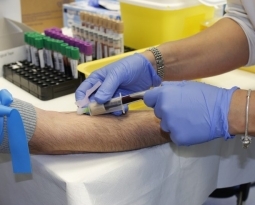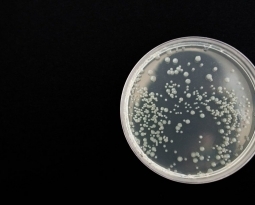Wisconsin Patent of the Month – December 2021
When baling hay, it’s common practice to use the elements to your advantage. You want your hay to be dry before baling it, so laying it out and letting the sun and wind dry it out is often a cost effective solution. The hay bale needs to have less than 18% moisture or it runs the risk of mold growth. However, if alfalfa hay drops below a moisture content of 13%, the leaves become too brittle and shatter as they are baled. Since alfalfa hay is a large crop used in feeding livestock, the nutrients lost during this process are crucial for the livestock.
Farmers often add an extra step into baling alfalfa hay. They allow the hay to dry out in the elements, then wait for natural dew to add a small amount of moisture back into the hay. This damp hay is then baled, protecting the leaves and nutrients. This process requires waiting for dew to effectively soften alfalfa – a challenge for any farmer in arid regions.
Attempts at manufacturing this process by replicating dew are limited by a waxy coating on the alfalfa which prevents the water from soaking in. Other methods have attempted to warm the water and use steam to penetrate the coating. However, as physics dictates, heated water then evaporates before being added to the hay and the system requires a large volume of water to be added to meet the required moisture content.
Harvest Tec, Inc. has developed a Dew Simulator which addresses these limitations. Their system is faster than natural dew, penetrates the waxy coating, and operates with an acceptable volume of water. Their system sprays hot water in a fine mist to both the inside and outside of a windrow of hay. A rotating shaft has a series of spikes attached to it which travel over the windrows, piercing them and spraying hot water evenly inside and out. Heat is applied to the water as it is being sprayed in order to limit the amount of evaporation before the water gets to the hay. This keeps the volume of water needed to the minimal amount. The system can be attached to a farm vehicle to be easily driven across each row of hay. This provides all the benefits of a natural dew process while increasing efficiency and expanding the operating hours to any time of day.
Are you developing new technology for an existing application? Did you know your development work could be eligible for the R&D Tax Credit and you can receive up to 14% back on your expenses? Even if your development isn’t successful your work may still qualify for R&D credits (i.e. you don’t need to have a patent to qualify). To find out more, please contact a Swanson Reed R&D Specialist today or check out our free online eligibility test.
Who We Are:
Swanson Reed is one of the U.S.’ largest Specialist R&D tax advisory firms. We manage all facets of the R&D tax credit program, from claim preparation and audit compliance to claim disputes.
Swanson Reed regularly hosts free webinars and provides free IRS CE and CPE credits for CPAs. For more information please visit us at www.swansonreed.com/webinars or contact your usual Swanson Reed representative.

















